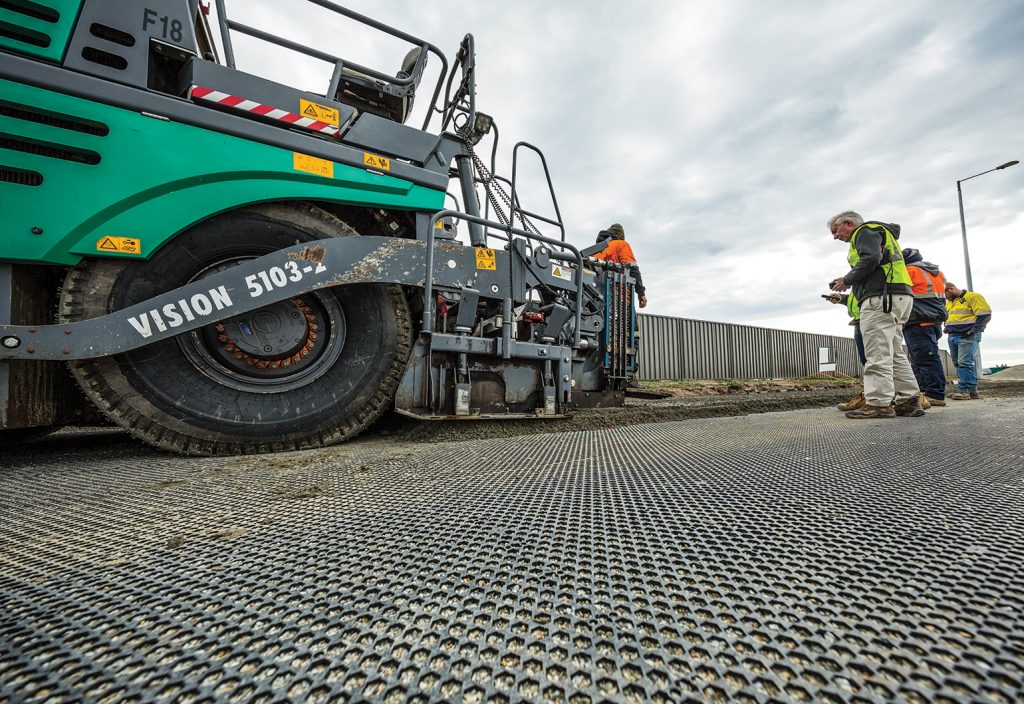An Australian company could save thousands of old tyres by recycling them into a novel paving material.
A free-draining concrete solution being trialled in Victoria could see old tyres find a new home beneath thoroughbred racetracks.
According to Tyre Stewardship Australia (TSA), the equivalent of roughly 56 million passenger car tyres are disposed of each year. Tyres are, by their design, difficult to break down, and can present a major landfill issue if not managed properly.
The substructure product being tested, named Equine Air, was installed in July at Pakenham Racecourse. The sustainable drainage system offers an alternative to traditional unbound road bases. It was originally developed for netball courts and has global accreditation for a variety of field sports.
“We built some soccer fields at Doncaster in the UK, which led to its application in the horse racing field,” Gary Bullock, Managing Director of Flexiroc Australia and a civil engineer, told create.
Rubber-based concrete is not new, he adds, pointing out that it remains a challenge to work with. It is prone to balling up in the mix and achieving a proper dispersion can be tricky.
“Some of the biggest concrete companies in the world have tried to use it, and have given up,” said Bullock, who added it took four years’ research and development to get it right.
The first Australian trial was on a 35-metre track at Talwood Park. The Pakenham trial, measuring 110 metres by 5 metres, will establish a performance basis for track improvements in the racing industry.
These are not the only possible ways of creating value from old tyres, but the “most consistently high-grade” opportunities so far have been with roads, explains Liam O’Keefe, Market Development Manager at TSA.
“The use of rubber as a polymer in various bitumen mixes, whether that be spray seal or asphalt, enhances the properties of the bitumen to create roads that perform better,” he said.
Among the claimed benefits of Equine Air are improved track drainage, use in all weather conditions and reduced horse injuries due to its cushioned base. And Pakenham and thoroughbred tracks are just the beginning.
“After extensive performance testing, Equine Air will hopefully become the benchmark for Racing Victoria,” Bullock said.
“Ultimately, we hope it will be used in thoroughbred tracks around the world.”
Laying down tracks
Equine Air is also specified for installation as a permeable pavement at the Lilyfield depot for the Sydney Light Rail project.
It is in such civil engineering applications where the rubber really hits the road regarding those 56 million unused tyres each year. A typical thoroughbred track would, by Flexiroc Australia Managing Director Gary Bullock’s calculations, use 70,000 tyres per kilometre of track.
However, heavy rail applications for a single track would require 20,000 tyres per kilometre, or up to a million tyres per 50 kilometres of track.
“So keep driving and wearing out those tyres,” Bullock said.
This article originally appeared as “Off to the races” in the December 2018 issue of create magazine.
